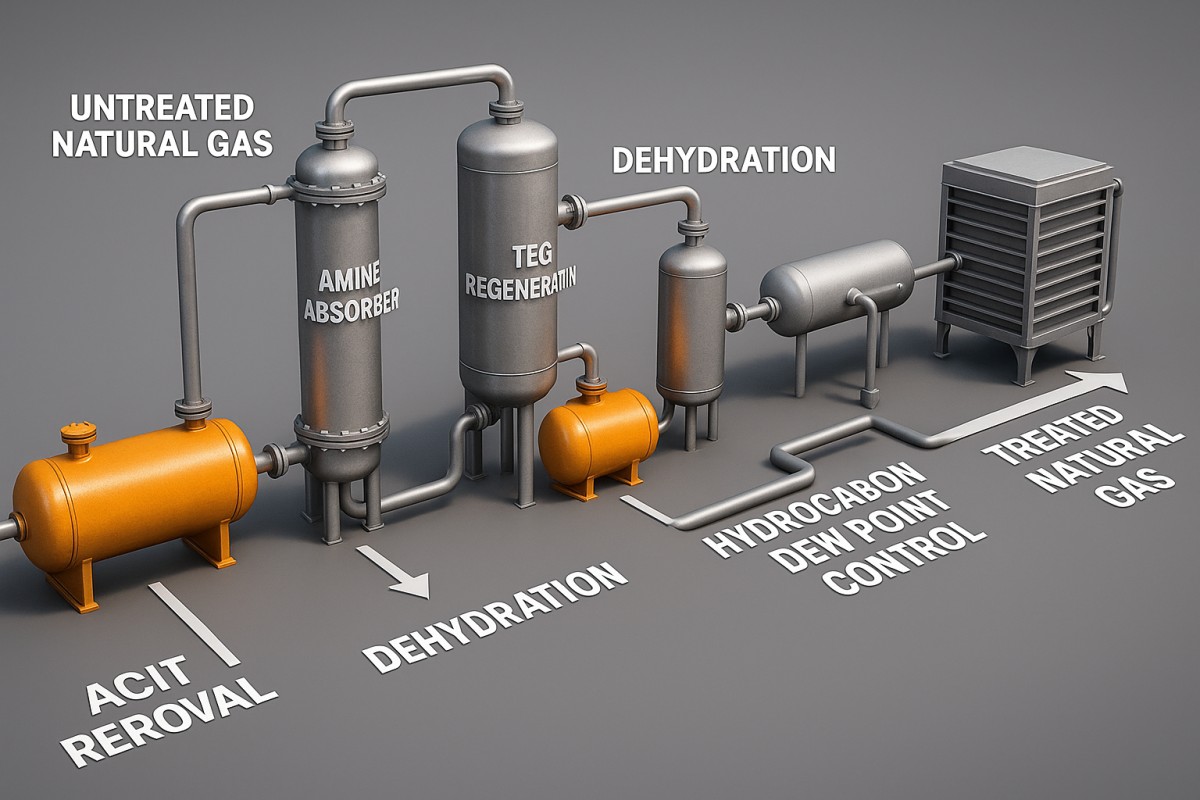
Our News
Find out about our latest news here.
Latest News
- ▶ Anti-Bribery and Corruption (ABC) Compliance Policy
- ▶ The Critical Role and Application of Heat Exchangers in the Natural Gas Treating Process
- ▶ Employee Code of Conduct
- ▶ Helical Baffle Heat Exchanger: Working Principles, Advantages and Industrial Applications
- ▶ Fraud Prevention & Anti-Fraud Policy
- ▶ Moments from Boyu International Trading Team at ADIPEC Abu Dhabi
Message

In natural gas processing, refining, petrochemical, and energy industries, Gas Treating is a vital process that ensures natural gas meets the specifications required for transportation, liquefaction, or further downstream processing. Its main purpose is to remove acidic components (H₂S, CO₂), moisture, heavy hydrocarbons, and other impurities. Throughout the entire process, heat exchangers serve as essential equipment for energy recovery and temperature control, playing a key role across amine treating, regeneration, dehydration, condensation, mercury removal, and sulfur recovery units.
1. Overview of Gas Treating Workflow and the Role of Heat Exchangers
A typical natural gas treating process includes:
Acid gas removal (Amine Treating)
Amine regeneration
Gas dehydration (TEG or molecular sieve)
Hydrocarbon dew point control
Mercury removal
Stabilization and deep cooling
Sulfur Recovery Unit (SRU) support
Throughout these stages, heat exchangers enable temperature regulation, heat recovery, gas cooling, and condensation—significantly enhancing energy efficiency and operational stability.
2. Applications of Heat Exchangers in the Acid Gas Removal Section
1. Lean/Rich Amine Heat Exchanger
This is the core exchanger in the entire amine treating system.
Heats rich amine before entering the regenerator
Cools lean amine before entering the absorber
Greatly reduces steam consumption in the reboiler
Recommended exchanger types:
Spiral plate heat exchangers (high efficiency, fouling resistant, minimal leakage)
Shell-and-tube exchangers (easy maintenance, widely used in gas plants)
3. Heat Exchangers in the Amine Regeneration System
Amine regeneration requires steam reboiling, overhead condensation, reflux control, and temperature balancing—processes that rely heavily on heat exchangers.
1. Regenerator Reboiler
Provides the required heat to strip H₂S and CO₂ from the amine stream.
2. Overhead Condenser
Condenses overhead vapors to generate reflux and maintain column stability.
Applicable heat exchangers:
Shell-and-tube reboilers
Top condensers
Spiral plate condensers (high heat transfer efficiency)
4. Heat Exchanger Applications in the TEG Dehydration System
Before natural gas enters pipelines or LNG production, strict dehydration is essential. The TEG system relies on multiple heat exchange processes.
1. Glycol Preheater
Preheats rich glycol to improve regeneration performance.
2. TEG Regeneration Reboiler
Removes water from glycol and maintains high-purity TEG.
3. Gas Coolers / Air Coolers
Reduce dehydrated gas temperature to meet downstream specifications.
Recommended exchangers:
Shell-and-tube preheaters
Air-cooled heat exchangers
Helical baffle exchangers (low pressure drop and high efficiency)
5. Hydrocarbon Dew Point Control and Condensation Systems
During cooling, heavier hydrocarbons (C₅⁺) condense out. This requires:
Low-temperature coolers
Cold box heat exchangers
Heavy hydrocarbon condensers
These depend on precision temperature control and stable cooling performance.
Suitable equipment:
Shell-and-tube coolers
Spiral plate exchangers (resistant to fouling and blocking)
Low-temperature exchangers for cryogenic service
6. Heat Exchangers in Mercury Removal and Gas Purification
Mercury absorbers typically require gas temperatures to be controlled between 40–60°C, necessitating:
Process heaters
Accurate coolers
Heat exchangers help maintain adsorbent performance and protect downstream aluminum heat exchangers from mercury-induced corrosion.
7. Heat Exchanger Use in Sulfur Recovery (SRU) Systems
Before and after feeding acid gas into the SRU, the process requires heating, cooling, and condensation, including:
Acid gas preheaters
Main pipeline coolers
Condensers for elemental sulfur
All of these rely on durable, corrosion-resistant heat exchangers.
8. Key Benefits of Heat Exchangers in Natural Gas Treating
1. Reduced energy consumption and operational costs
Lean/rich exchangers and TEG regeneration systems significantly improve energy efficiency.
2. Enhanced process stability and gas quality
Accurate temperature control is essential to meeting gas treating specifications.
3. Strong adaptability
Heat exchangers can be customized for amine solutions, TEG, hydrocarbons, and various gas streams.
4. Long service life and low maintenance
Spiral plate exchangers are especially effective in fouling-prone service.
PROFESSIONAL CONSULTATION
If you are interested in our products and want to know more details, please leave a message here, we will reply you as soon as we can.